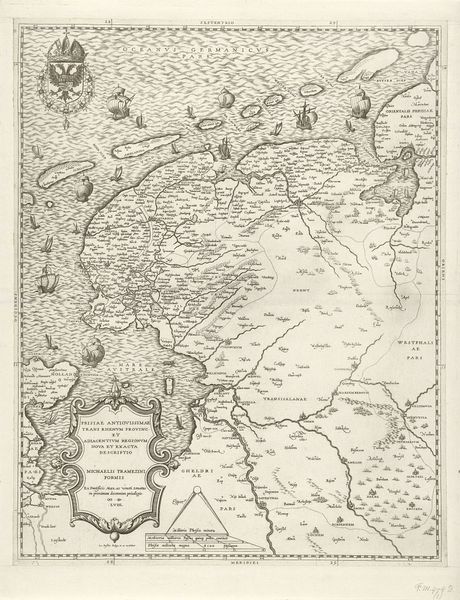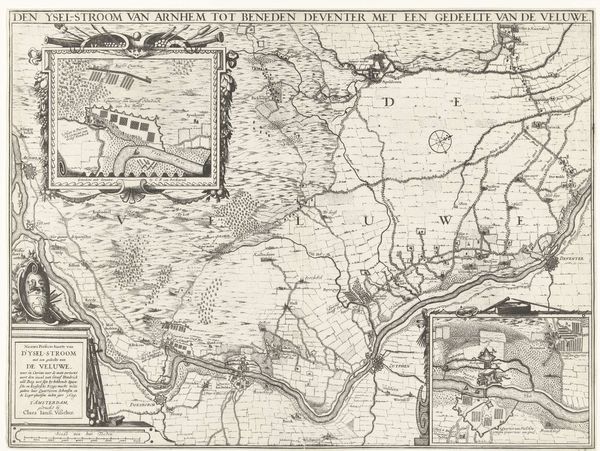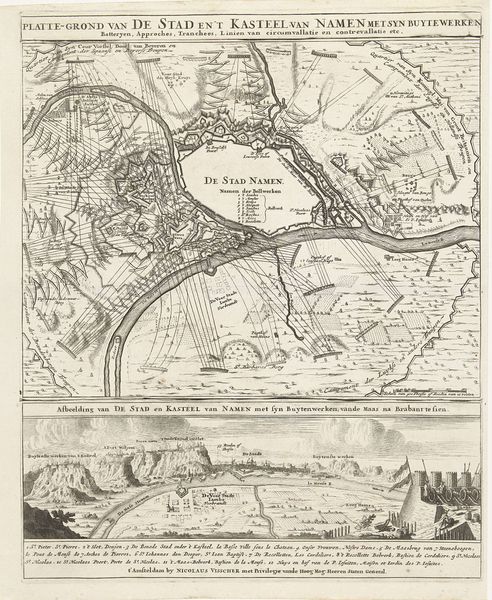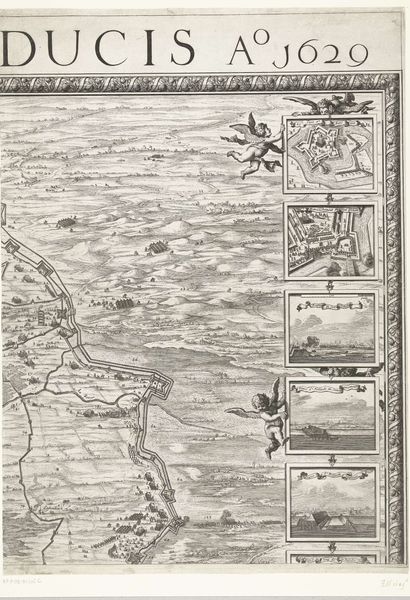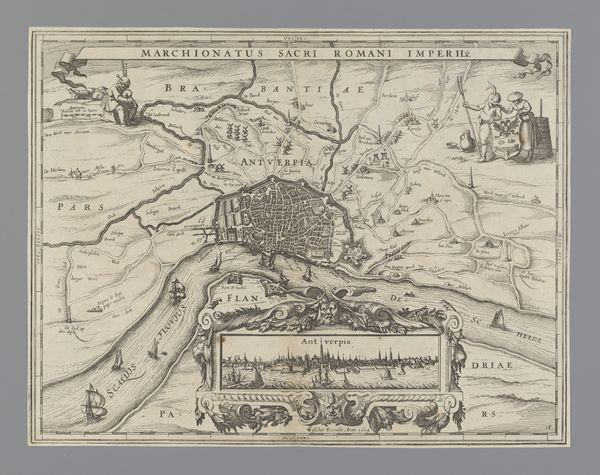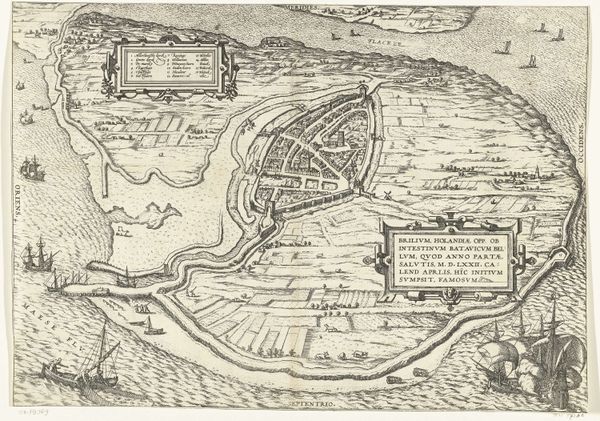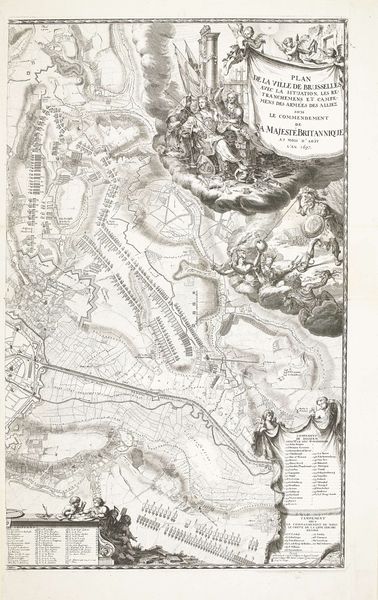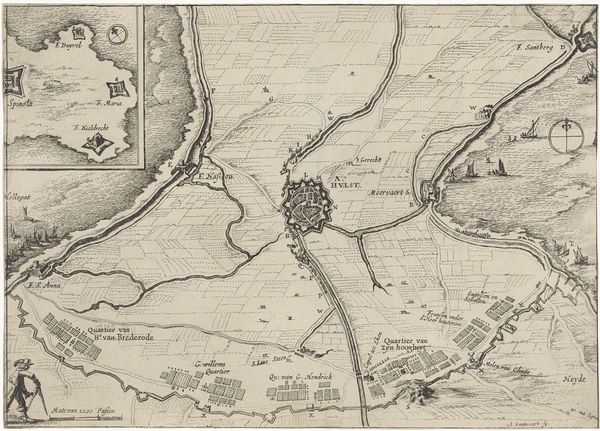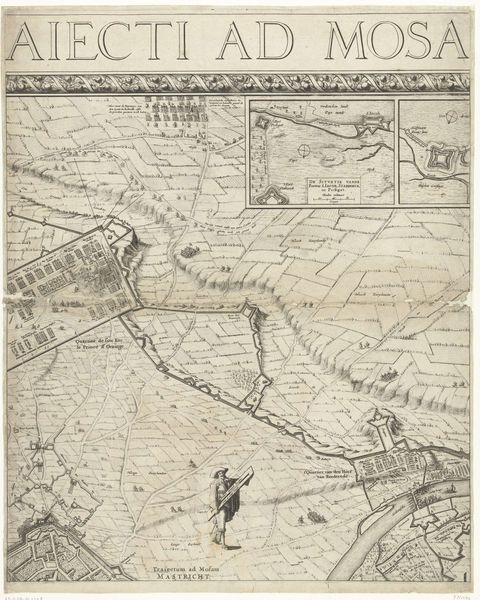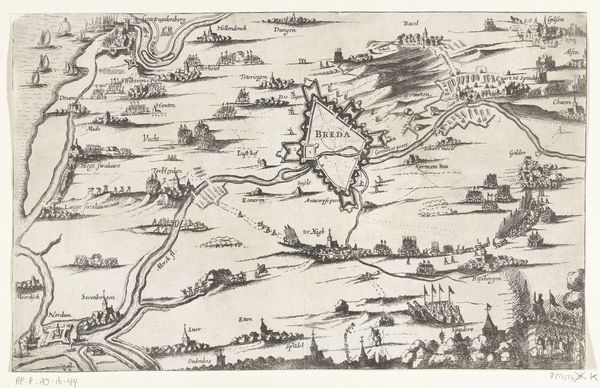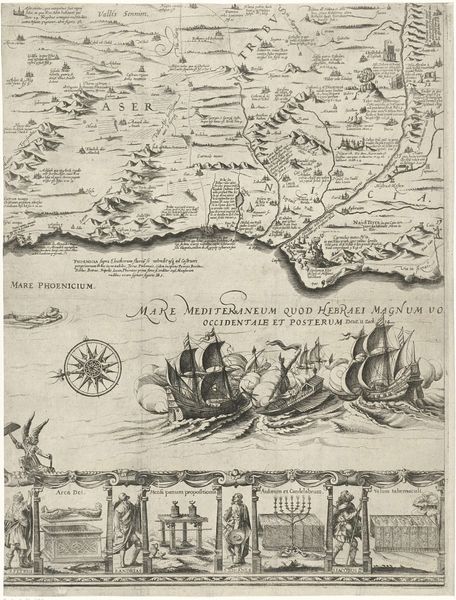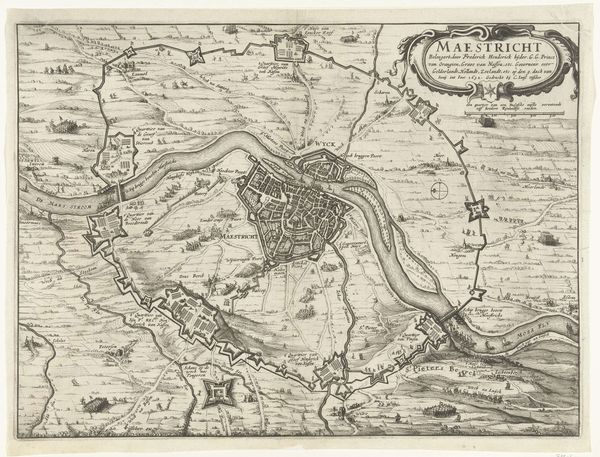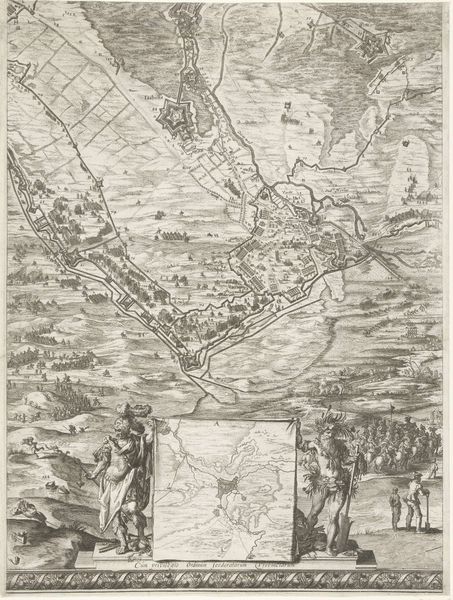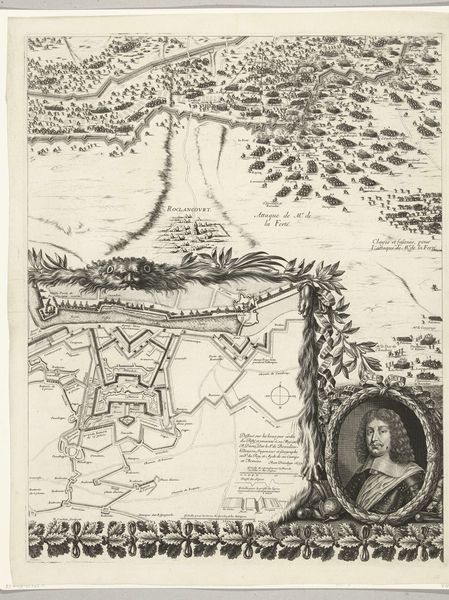
Grote kaart van het beleg van Den Bosch door Frederik Hendrik (blad middenboven), 1629 1629
0:00
0:00
balthasarfloriszvanberckenrode
Rijksmuseum
print, engraving
#
pen drawing
#
dutch-golden-age
# print
#
old engraving style
#
line
#
sketchbook drawing
#
cityscape
#
history-painting
#
engraving
Dimensions: height 652 mm, width 490 mm
Copyright: Rijks Museum: Open Domain
This is a section of the 1629 map of the siege of Den Bosch by Frederik Hendrik, created by Balthasar Florisz. van Berckenrode. Note the heraldic symbols at the top. Here, putti flank crowned shields, all framed within a laurel wreath—the lion rampant represents courage, nobility, royalty, strength, stateliness, and valor. This motif, as old as the hills, carries within it the weight of dynasties and the primal roar of power. The lion's symbolic journey is a winding path. From the biblical descriptions of the Lion of Judah to the emblems of medieval knights, it always embodies an assertion of dominance. The wreaths are a sign of triumph and honor, similar to the classical Roman use of the same symbol. This symbolic language, so deeply ingrained in our collective consciousness, stirs something primal within us. It speaks to our subconscious understanding of power, struggle, and the cyclical nature of history. The emotional resonance of these emblems lies in their ability to evoke deeply rooted memories and feelings, even when their original contexts fade into the mists of time. The use of heraldic symbols is not linear; it resurfaces, evolves, and finds new resonance across time.
Comments
No comments
Be the first to comment and join the conversation on the ultimate creative platform.
